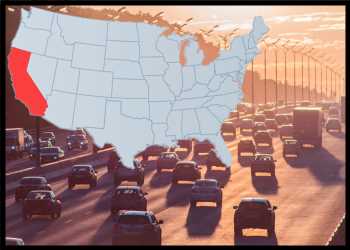In a major step in its attempts to tackle climate change, California has set a roadmap that by 2035, 100 percent of new cars and light trucks sold in the state will be zero-emission vehicles.
The California Air Resources Board approved the Advanced Clean Cars II rule that sets California on a path to rapidly growing zero-emission car, pickup truck and SUV market and deliver cleaner air and massive reductions in climate-warming pollution.
The first of its kind ZEV regulation in the U.S. realizes and codifies the light-duty vehicle goals set out in Governor Gavin Newsom’s Executive Order.
“The regulation includes ground-breaking strategies to bring ZEVs to more communities and is supported by the Governor’s ZEV budget which provides incentives to make ZEVs available to the widest number of economic groups in California, including low- and moderate-income consumers,” said CARB Chair Liane Randolph.
California’s is the most aggressive regulation to establish a definitive mechanism to meet required zero-emission vehicle (ZEV) sales that ramp up year over year, culminating in 100 percent ZEV sales in 2035.
By the time a child born this year is ready to enter middle school, only zero-emission vehicles or a limited number of plug-in hybrids (PHEVs) will be offered for sale in California. The regulation also includes provisions that enhance equity in the transition to zero-emission vehicles and provides consumers certainty about the long-term emission benefits, quality, and durability of these clean cars and trucks and the batteries they run on.
By 2037, the regulation delivers a 25% reduction in smog-causing pollution from light-duty vehicles to meet federal air quality standards. This benefits all Californians but especially the state’s most environmentally and economically burdened communities along freeways and other heavily traveled thoroughfares.
The new regulation requires automakers to deliver an increasing number of zero-emission light-duty vehicles each year beginning in 2026. Sales of new ZEVs and PHEVs will start with 35 percent that year, increase to 68 percent in 2030, and reach 100 percent in 2035.
California Legislature has approved $2.7 billion in fiscal year 2022-23, and $3.9 billion over three years, for investment in ZEV adoption, as well as clean mobility options for the state’s most environmentally and economically burdened communities.
CARB analysis indicates that battery-electric vehicles are likely to reach cost parity with conventional vehicles by 2030.
Transportation is responsible for half of greenhouse gas emissions and 80 percent of air pollutants in California, which is the most populous state in the U.S. and one of the world’s biggest economies.
Source: Read Full Article
